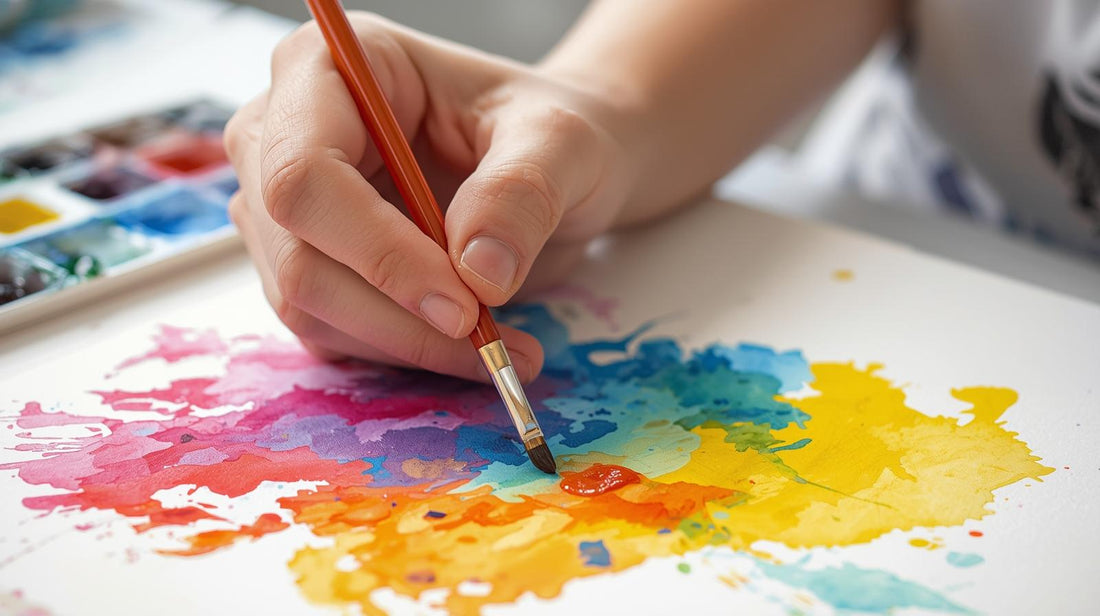
How much is my art worth? (and why that’s a hard question)
Share
Pricing art is one of the most complicated, emotional, and strangely taboo topics for artists, especially emerging ones. I know I’m not alone when I say I’ve gone in circles trying to answer what feels like a simple question: “How much should I charge for my work?”
It should be technical: square centimeters, materials, experience, market value. But it’s never just about numbers. It’s about value, and for artists that gets tangled up in self-worth, visibility, and validation.
Let me be honest with you: pricing my art has never felt easy. Even now, after exhibitions, after selling works, after refining my practice, I still sit in front of a finished piece wondering:
“What is this worth?”
“Will anyone pay this much?”
“Am I asking too much? Or not enough?”
“Am I even allowed to charge this?”
Every time I price a new piece, a small voice in me tries to shrink — to be “affordable,” “approachable,” or just to avoid seeming arrogant. And I know I’m not the only one who feels this.
So here’s how I’m learning to handle it.
What I Consider When Pricing My Work
I try to be practical first. I think about the materials I used: high-quality watercolor paper, artist-grade paints, wood mounts, archival finishes. These aren’t cheap, and neither is time.
Then I think about the hours I spent. Not just painting, but sketching, discarding, starting again. And I think about the practice that led up to being able to paint something that feels quiet, intentional, and whole.
I look at what similar artists are charging... artists like me: emerging, exhibiting, building something slowly and seriously.
And most importantly, I ask myself: “Would I feel respected and sustained at this price?” Because if the answer is no, then it’s not the right number, no matter what anyone else is doing.
When the Work Doesn’t Sell
Here’s the hard part. Sometimes I price a piece - fairly, honestly - and it sits. No one buys it. No one even asks. And that’s when the doubts come in:
“Maybe it’s not good enough.”
“Maybe I’m asking too much.”
“Maybe I should just lower the price.”
It’s painful, not because I only care about selling, but because sales feel like external proof that the work matters. That it was worth making. But the truth is: low sales don’t mean the art has no value. And they definitely don’t mean I don’t have value.
Art is slow. Finding the right person for a piece is slow. And if I give in to the pressure to discount my own worth just to feel productive or validated, I’m not helping myself. I’m shrinking myself.
Should I Feel Guilty for My Prices?
Sometimes I still do. I feel guilty for charging more than I used to. I feel guilty when someone loves a piece but can’t afford it. I feel guilty even when I know the price is fair.
But here’s what I remind myself: I’m not just selling a painting. I’m selling time, thought, process, and care. I’m also trying to build a life where I can keep making these things that matter.
That’s not something to feel guilty about. That’s something to be proud of.
Should I Lower My Prices?
I’ve asked myself this a lot.
Sometimes lowering prices can make sense, if I’m releasing smaller works, trying a new format, or creating something more accessible on purpose.
But if I’m lowering prices out of fear? Out of insecurity? Out of feeling like my worth depends on whether something sells in a week? Then no. That’s not a reason I want to live by.
So, What Do I Do?
I come back to this: I will stick to what I believe my work is worth.
I might have slow seasons. I might get discouraged. I might feel invisible some days.
But I know what goes into my work. I know how long it took to get here. And I believe that the value is already in the piece, whether someone buys it today, next year, or never.
So I keep painting. I keep showing up. And I keep trusting that the right people will connect with what I do, at the right time.
Thanks for being here. It means more than you know.
